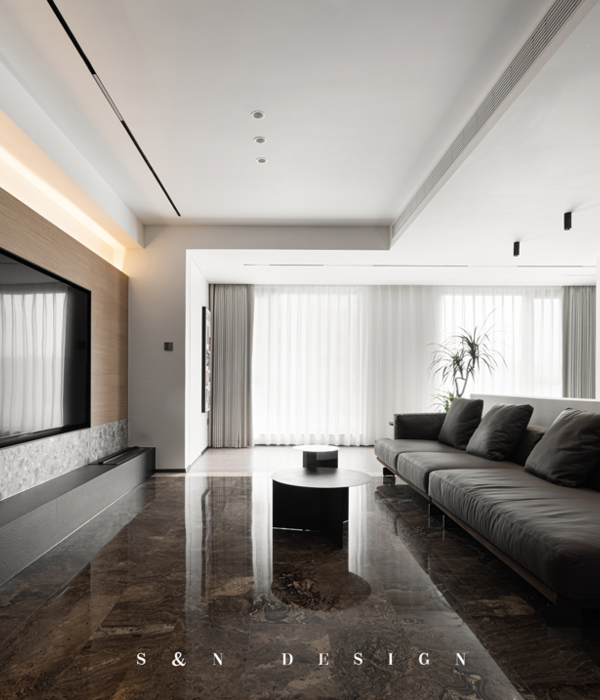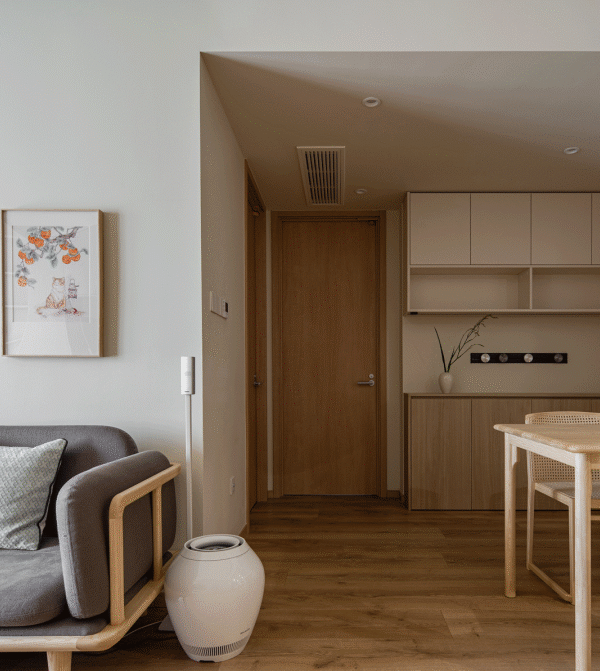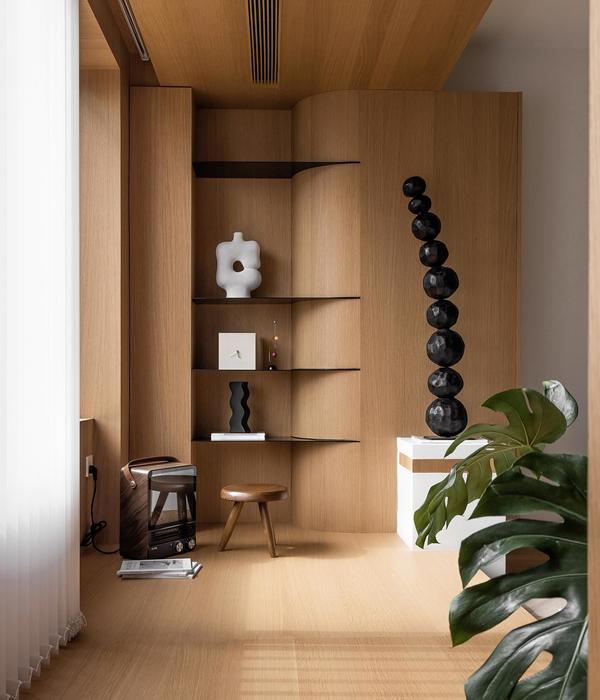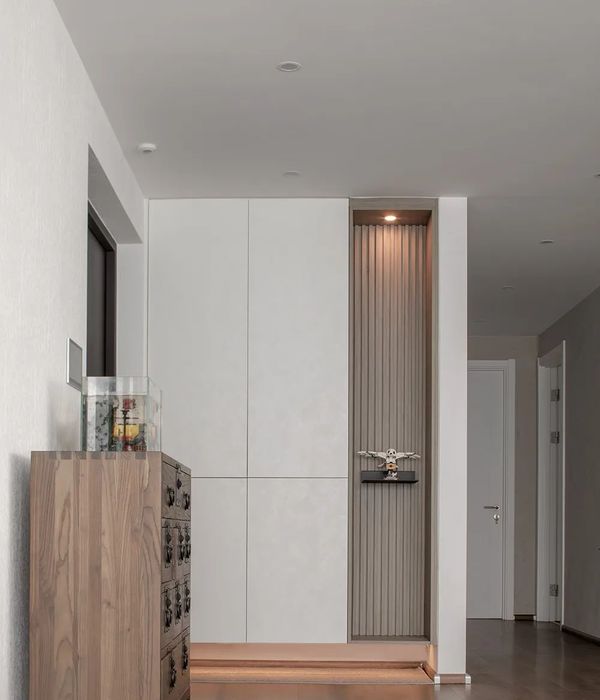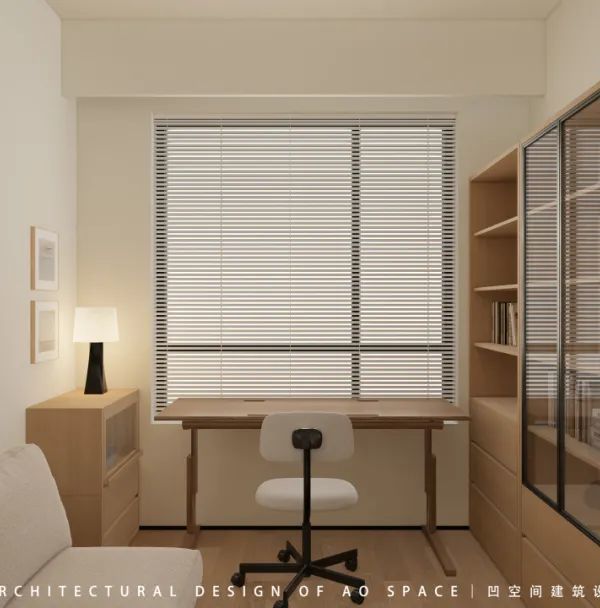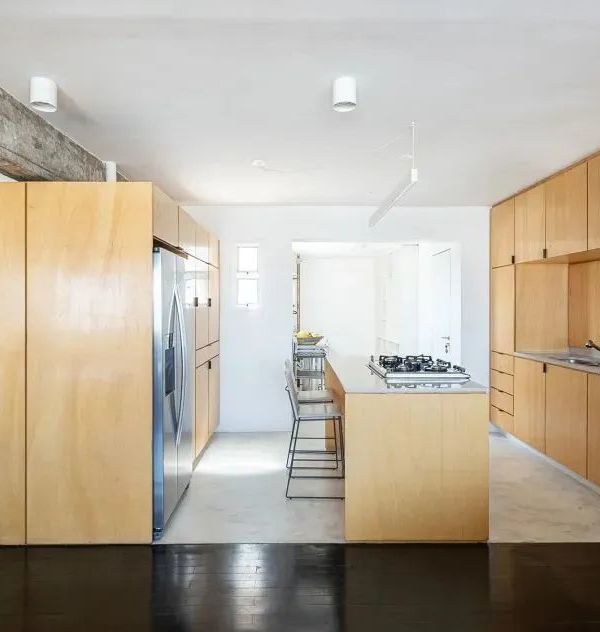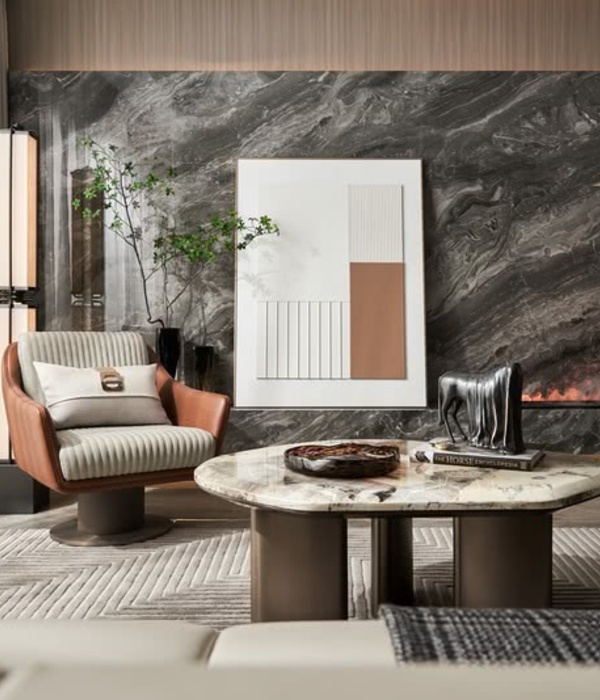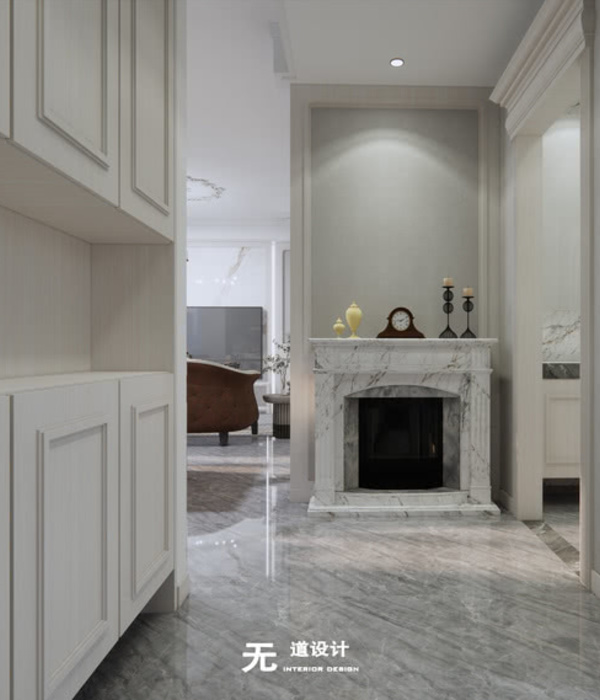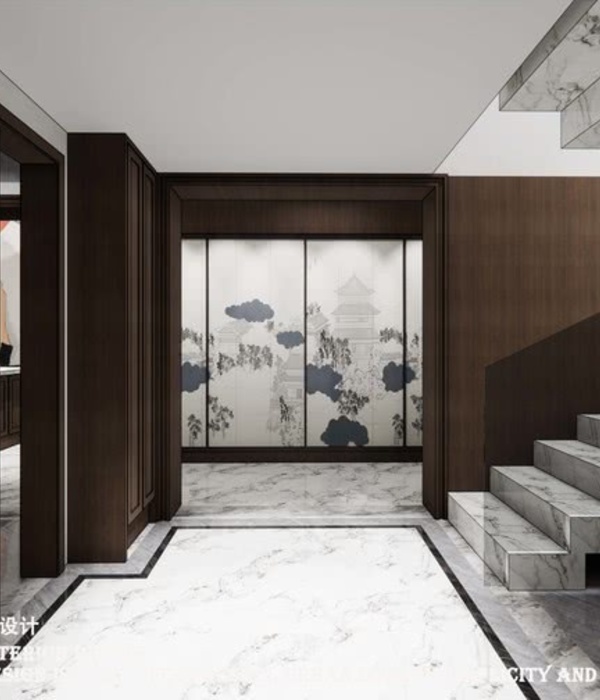我们的生活有87%是在建筑中度过。建筑物构成了我们共同生活的物质基础,而也正是建筑的这种物质与实体的属性给社会带来了最严重的生态和社会挑战之一。因此,人们如何在未来共同生活的问题也就与建筑未来的问题形成了内在的联系。
建筑建造已经成为物质性最密集、对环境危害最大的人类活动之一。自上个世纪以来,仅由承重结构带来的人均建筑材料消耗就已经增加数倍,而承重结构的材料占据整个建筑材料的一半以上。当下的建筑形式优先考虑简单的施工过程而非节约材料与资源,已不具备可持续性,因而迫切需要新的方法。
We spend 87 percent of our lives in buildings. Buildings constitute the physical substrate for living together, and it is precisely this materiality and materialization of buildings that poses one of the most important ecological and social challenges to society. The question of how people will live together in the future is thus intrinsically linked to the question of the future of building.
Construction has become one of the most materially intense and environmentally detrimental human activities. The per capita consumption of construction materials for load-bearing structures alone, which account for more than half of the materials used in buildings, has multiplied over the last century. Building in the present form, which prioritizes simple construction processes over saving material and resources, no longer seems sustainable. New approaches are urgently needed.
▼纤维住宅,Maison Fibre © ICD/ITKE/IntCDC University of Stuttgart
大自然恰恰为我们提供了一个典范式的替代方案:几乎所有生物界的承重结构都是纤维系统,其纤维的组织、方向性和密度都与产生的力形成了精确的校准关系。由此产生的高水平的形态分化、功能性和相关的资源效率便成为了自然结构的象征。斯图加特大学的项目团队多年来一直在研究以“更少的材料”构建“更丰富的形式”的仿生原则。纤维结构为建造未来的人类住所提供了一种独特且值得深入思考的材料方法。
Nature provides just such a paradigmatic alternative: Almost all load-bearing structures in biology are fibrous systems, in which the fiber organization, directionality, and density are finely calibrated with the occurring forces. The resulting high level of morphological differentiation, functionality, and related resource efficiency are emblematic of natural structures. The biomimetic principles of using “less material” by having “more form” have been investigated for many years by the project team at the University of Stuttgart. Fibrous construction offers a profoundly different material approach for building future human habitats.
▼“纤维住宅”在2021年威尼斯建筑双年展展场,Maison Fibre on Biennale Architettura 2021 © ICD/ITKE/IntCDC University of Stuttgart
斯图加特大学ICD和ITKE团队在2021年的建筑双年展上呈现了他们对这一另类物质文化的长期探索成果。“纤维住宅”是展览中的核心展品,它既是一个全尺寸的建筑装置,又是一个为假定中的文化变革所做的开放模型。该项目针对的是从“前数字时代的材料密集型建造”到“真正的数字建造”的转变方式:前者主要使用重型、各向同性(isotropic)的建筑材料,如混凝土、石材和钢材,这些材料通常在遥远的地方采集并加工成建筑单元,再经过长途运输送达场地;后者使用高度各向异性(anisotropic)的材料,并在当地完成结构的分化和装配,最终呈现为一个由纤维构成的建筑。
▼建筑设计分析,Architectural Design © ICD/ITKE/IntCDC University of Stuttgart
▼模型,architectural model © ICD/ITKE/IntCDC University of Stuttgart
ICD and ITKE’s contribution to the Biennale Architettura 2021 is an exploration of an alternative material culture, a term commonly used in the social sciences and the humanities. Maison Fibre, the central display of the exhibition, is both a full-scale architectural installation and an open model for the cultural change being postulated. It deals with the departure from pre-digital, material-intensive construction using mostly heavy, isotropic building materials such as concrete, stone, and steel—which are often extracted in faraway places, processed into building elements, and then transported over long distances—to genuinely digital construction methods with locally differentiated and locally manufactured structures made of highly anisotropic materials: an architecture made of fibers.
▼“纤维住宅”外观,Exterior view © ICD/ITKE/IntCDC University of Stuttgart
“纤维住宅”是基于项目团队对“机械制造的纤维复合结构”长达十年的研究而产生的。作为该类型中的第一座多层建筑,“纤维住宅”包含了可居住的纤维楼板和墙壁,其整个结构均是由“纤维纺线”构成,其本质是一束束无端点的单向纤维。为了强调项目的模型特征,项目团队开发了一个以2.5米典型住宅网格为基础、由可重新配置的墙壁和天花板元素构成的系统。
▼一个以2.5米典型住宅网格为基础、由可重新配置的墙壁和天花板元素构成的系统 © ICD/ITKE/IntCDC University of Stuttgart A system of reconfigurable wall and ceiling elements based on the 2.5-meter grid dimension typical of residential buildings was developed
▼纤维单元示意,Fabrication © ICD/ITKE/IntCDC University of Stuttgart
Maison Fibre is based on a decade of research on robotically manufactured fiber composite structures. It is the first multi-story architecture of this kind, featuring inhabitable fibrous floor slabs and walls. The entire structure consists exclusively of so-called fiber rovings, essentially bundles of endless, unidirectional fibers. To underline the model character of the project, a system of reconfigurable wall and ceiling elements based on the 2.5-meter grid dimension typical of residential buildings was developed.
▼整个结构均是由“纤维纺线”构成,The entire structure consists exclusively of so-called fiber rovings © ICD/ITKE/IntCDC University of Stuttgart
▼二层空间,The upper floor © ICD/ITKE/IntCDC University of Stuttgart
该建筑的投射性反映了对勒·柯布西耶的多米诺住宅(Maison Dom-Ino)的参考——后者是建筑史上具有重要影响的建筑模型。该装置的建筑面积、三层楼的布局和划分以及多功能、可扩展的系统均与多米诺住宅相吻合。与大型体块的构造相比,纤维结构具有另一种完全不同的性质,可以被参观者从空间和触觉上直观地体验到。另一个关键的区别体现在结构的适应能力以及由此产生的与既有建筑群的互动关系,这对于未来的城市建筑而言有决定性的影响——在双年展展场,军械库的既有立柱被整合到装置当中,有意地强调了这一点。
The project’s projective aspect is derived from its reference to a formative model of architectural history, Le Corbusier’s Maison Dom-Ino. The floor area of the installation corresponds to the historical reference, as does the division over three floors and the versatile, expandable system. The radically different nature of the fibrous – compared to tectonics of the massive – can be experienced spatially and tactilely by the visitors. Another key difference is the possible adaptability and thus the interaction with the existing building stock, which will be decisive for future urban buildings. This is deliberately emphasized by integrating the existing columns of the Arsenale building into the installation.
▼军械库的既有立柱被整合到装置当中,The existing columns of the Arsenale building are integrated into the installation © ICD/ITKE/IntCDC University of Stuttgart
▼二层空间细节,Upper floor detailed view © ICD/ITKE/IntCDC University of Stuttgart
纤维墙体和天花板构建的制造采用了项目团队研发的无芯的机械缠丝技术,可使纤维具有适应局部负荷的能力,并允许对纤维进行排列,从而实现一种令人惊叹的轻质结构:上部楼层的承重纤维结构在符合建造规范的情况下重量仅为9.9千克/平方米。墙体单元的重量还要更轻。
▼结构设计示意:令人惊叹的轻质结构,Structural Design: an extraordinary lightweight construction © ICD/ITKE/IntCDC University of Stuttgart
The fibrous wall and ceiling elements were manufactured using the coreless, robotic winding process developed by the project team, which allows for locally load-adapted design and alignment of the fibers, thus enabling an extraordinary lightweight construction: The code-compliant, load-bearing fiber structure of the upper floor weighs just 9,9 kg/m². The wall elements are even lighter.
▼纤维墙体细节,Fiber structure detailed view © ICD/ITKE/IntCDC University of Stuttgart
▼参观者可以从空间和触觉上直观地体验到纤维结构的性质,The radically different nature of the fibrous can be experienced spatially and tactilely by the visitors © ICD/ITKE/IntCDC University of Stuttgart
制作单个承重楼板所需的材料总量不到组件体积的2%,极低的材料消耗加上极为紧凑的机械生产单元,使未来可以完全实现现场生产,且不论是在最初的施工过程还是后期的扩建或改造过程中,都不会产生过多的噪音和浪费。使用这种方法建造的建筑将长时间地保持适应性与灵活性。
For the fabrication of a load-bearing floor element, less than two percent of the component volume is required as material volume. This extremely low material consumption coupled with the very compact, robotic production unit could in the future make it possible to carry out the entire production on-site without a significant amount of noise or waste, not only during the initial construction process, but also during expansion or conversions. As a result, architecture built using this method will remain adaptable and flexible in the long term.
▼制作过程示意,Fabrication © ICD/ITKE/IntCDC University of Stuttgart
▼制作现场,Fabrication photo © ICD/ITKE/IntCDC University of Stuttgart
该项目所研究的建造方法可被用于各种材料。虽然“纤维住宅”在很大程度上依然采用当下易于获得的玻璃和碳纤维系统,但已有迹象表明,在不久的将来,材料谱系将发生大范围的扩展,届时将产生可以承受极端温度压力的矿物纤维系统,以及能够在一年周期内生长的天然纤维系统。这些将建筑实体化和物质化的方法与现今已经建立起来的建筑概念有着非常大的不同,对此,位于二层的“实体化观点”和“物质性观点”展览区域将向参观者提供解释。
The building methods investigated in this project can be used for a variety of materials. While Maison Fibre still largely makes use of the currently available glass and carbon fiber systems, there are already signs of a considerable expansion of the material spectrum in the near future, ranging from mineral fiber systems that can withstand extreme temperature stresses, to natural fiber systems that grow within an annual cycle. These approaches to the materialization and materiality of architecture, which differ significantly from established notions of building, are explained to visitors in the exhibition sections “Materialization Perspective” and “Materiality Perspective” housed on the upper floor of Maison Fibre.
▼展览区域,Exhibition sections © ICD/ITKE/IntCDC University of Stuttgart
“纤维住宅”自身已展示出如何通过高度去形态化的结构来表达空间和营造真实的建筑,其中可以重新配置的建筑构件仅用数千克重的材料即可制成。与柯布西耶的作为20世纪建筑模型范例的多米诺体系相比,“纤维住宅”的结构重量足迹减少了约50倍;更加重要的是,它指向了更加新颖的物质文化以及更大型的生态(材料和能源)、经济(价值链和知识生产)、技术(数字技术和机器人技术)以及此处涉及的各类社会文化议题。
Masion Fibre itself shows the spatial expression and authentic architecture of a highly dematerialized structure, in which the reconfigurable building elements are made from just a few kilos of construction material. Compared to Le Corbusier’s Maison Dom-Ino as a role model for 20th century architecture, the weight footprint of the structure is reduced fiftyfold and points toward a novel material culture in architecture as well as the larger ecological (material and energy), economic (value chains and knowledge production), technical (digital technologies and robotics), and sociocultural matters entailed herein.
▼纤维细节,details © ICD/ITKE/IntCDC University of Stuttgart
▼单元原尺寸模型,Elements Mock Up © ICD/ITKE/IntCDC University of Stuttgart
▼装配现场,Assembly © ICD/ITKE/IntCDC University of Stuttgart
▼透视图,Perspective © ICD/ITKE/IntCDC University of Stuttgart
▼首层平面图,Plan Level 0 © ICD/ITKE/IntCDC University of Stuttgart
▼上层平面图,Plan Level 1 © ICD/ITKE/IntCDC University of Stuttgart
▼剖面图,Sections © ICD/ITKE/IntCDC University of Stuttgart
Project Team IntCDC / ICD University of Stuttgart, Institute for Computational Design and Construction Prof. Achim Menges, Niccolo Dambrosio, Katja Rinderspacher, Christoph Zechmeister, Rebeca Duque Estrada, Fabian Kannenberg, Christoph Schlopschnat IntCDC / ITKE University of Stuttgart, Institute of Building Structures and Structural Design Prof. Jan Knippers, Nikolas Früh, Marta Gil Pérez, Riccardo La Magna Lab support: Aleksa Arsic, Sergej Klassen, Kai Stiefenhofer Student Assistance: TzuYing Chen, Vanessa Costalonga Martins, Sacha Cutajar, Christo van der Hoven, Pei-Yi Huang, Madie Rasanani, Parisa Shafiee, Anand Nirbhaybhai Shah, Max Benjamin Zorn In collaboration with: FibR GmbH, Stuttgart Moritz Dörstelmann, Ondrej Kyjanek, Philipp Essers, Philipp Gülke, with support of: Erik Zanetti, Elpiza Kolo, Prateek Bajpai, Jamiel Abubaker, Konstantinos Doumanis, Julian Fial, Sergio Maggiulli Project Support University of Stuttgart, Cluster of Excellence IntCDC, EXC 2120, Ministry of Science, Research and the Arts, Baden-Württemberg GETTYLAB, Teijin Carbon Europe GmbH, Elisabetta Cane with Bipaled s.r.l. – Annalisa Pastore, Trimble Solutions Germany GmbH
Project Data Building System: Two-story, robotically fabricated, load bearing glass- and carbon fiber composite structure made of 23 km of glass fibers total and 20 km of carbon fibers total Dimensions Length/Width/Height: 10,00m / 11,78m / 5,76m Floor Area: 125 m² total 62,5 m² per floor Weight of load-bearing fiber composite structure: 9,9 kg/m² for inhabitable first floor Weight of load-bearing fiber composite structure including 27 mm timber floor panels: 23,7 kg/m² for inhabitable first floor Weight comparison to regular 200 mm thick concrete slab: Load-bearing fiber composite structure: 50x lighter Load-bearing fiber composite structure including timber floor panels: 21x lighter Material Volume Ratio: 1,9% material volume per slab volume
Photo credits: ICD/ITKE/IntCDC University of Stuttgart Photographers: Rob Faulkner, Christoph Zechmeister, Filippo Ferrarese
{{item.text_origin}}

